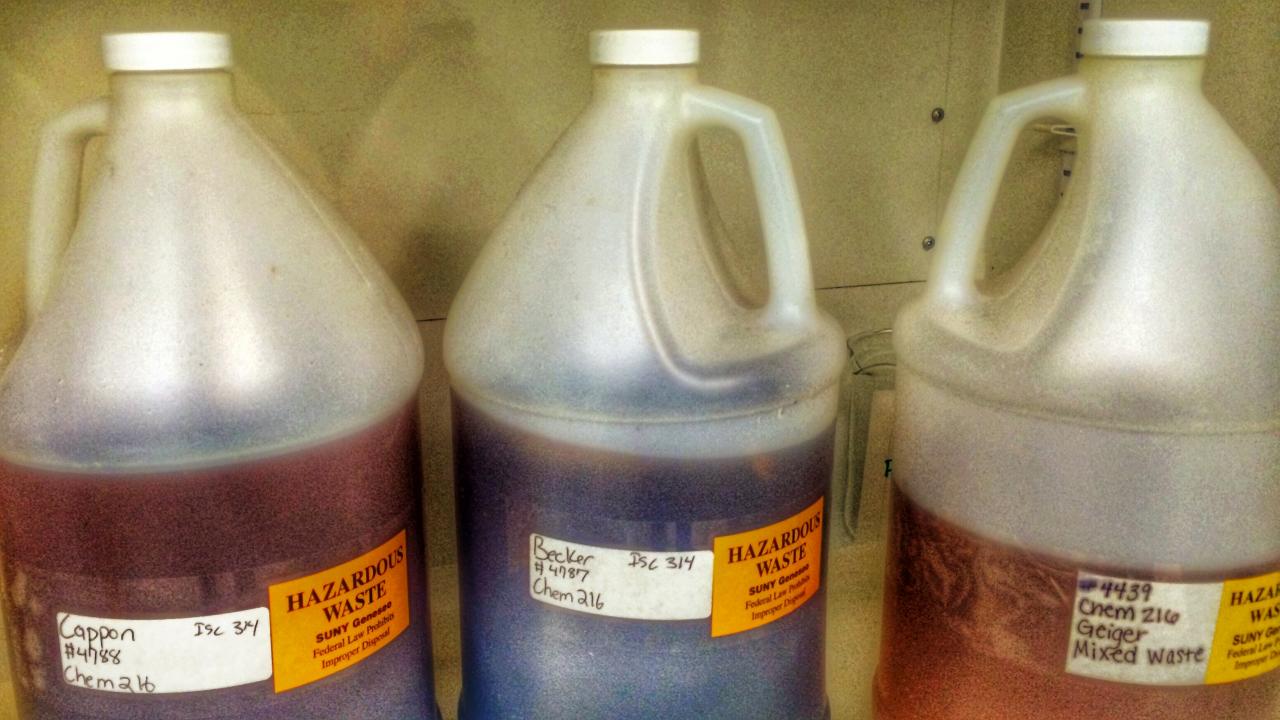For Faculty/Academic Chemistry Labs without LIs

Faculty in academic chemistry teaching labs are requested to utilize the following procedures to maintain the various waste receptacles for wastes generated in their teaching lab course(s):
Accumulate Waste in Provided Labeled Containers:
Chemical Waste Containers
- Lids/caps must be tightly closed when not being filled.
- During the lab, keep containers in secondary containment labeled Hazardous Waste Storage Area.
- After the active lab session has ended, keep containers in the Hazardous Waste Storage Cabinet provided under the waste hood in the Lab Room in which the bucket is used.
- Never allow the waste container to overfill. Leave at least 2 inches (5 cm) of air space below the cap to allow for expansion.
- Replacement 1 gallon poly containers are provided by the Chemistry Stockroom when needed.
- AVOID placing paper, stir bars, and other solid non-hazardous chemical debris in waste containers.
- Maintain an updated Hazardous Waste Log with the ID number associated with the waste container, recording all constituents (name of chemical, quantity, concentration) placed in the waste container.
- When full, inform stockroom staff for removal.
Lab Trash
- Place chemically contaminated trash (i.e. filter paper, weighing paper, paper towels used to clean up spills, dirty gloves) in the lab trash.
- AVOID placing hazardous chemical waste or glass in the Lab Trash.
- If full, inform stockroom staff for removal.
Glass Trash
- Place broken glass and used disposable clean or chemically contaminated glass in the glass trash.
- AVOID disposing of vials and pipets with chemicals still stored in them, please empty vials of contents and rinse before disposing in glass trash.
- If full, inform stockroom staff for removal.
Submitting a Request for Removal:
- Consolidate like-constituents listed in the Hazardous Waste Log to determine total volume of waste in the waste container.
- Ensure volume noted in Waste Log and actual volume match.
- Complete content constituent information on the log if necessary to determine actual amounts and concentrations of solutions.
- Do not use abbreviations or chemical formulas.
- Submit the waste container to EHS using the Mixed Waste Submission Form.
If appropriate, more detailed information about the SOP for submission can be found at Chemical Waste Submission SOP for LIs.
